Do Calf and Leg Compression Sleeves Work?
Written By Alecsa Stewart
Whether you travel frequently, are training for a marathon, or just looking for a way to boost blood flow in your lower limbs, compression sleeves can be really beneficial. With a gentle squeeze on the calf muscles and shins, they contribute to stability and comfort during walks, runs, or long stints without moving. They also help blood circulation and make it less likely that you develop blood clots, varicose veins, or other circulatory problems in the legs.
To answer the question: “Do calf and leg compression sleeves work?”, we need to understand the science behind them, what they work for, and how to choose the best sleeves for your particular situation. Here’s a detailed insight into all this and a bit more!
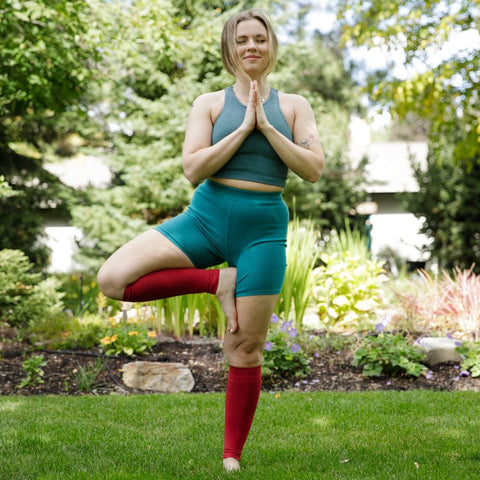
Do Compression Sleeves Really Work?
Studies on the role of compression garments in injury prevention and recovery have shown the benefits of wearing compression socks and sleeves for boosting circulation in the lower legs. Compression sleeves stimulate blood flow in the area between your ankles and your knees, preventing blood from pooling in the veins and possibly turning into a dangerous blood clot.
Moreover, when wearing compression sleeves during running, hiking, or walking, the enhanced blood flow in the lower legs delivers oxygen and nutrients to the calf muscles, helping them continue to withstand the effort. Muscles in the calves sustain slightly less damage than without compression. And, after physical activity, compression sleeves also support a quicker recovery.
The Science Behind Compression Sleeves
Compression sleeves work in two important ways: applying pressure that stimulates blood flow and massages the lower legs; and supporting the calf muscles and shins.
Just like compression socks, the therapeutic pressure works wonders for helping legs feel more energized and for preventing swelling and discomfort. Compression garments for the lower legs ensure that blood doesn’t pool in the veins. This reduces the risk of blood clots, deep vein thrombosis, and other medical conditions. The continued blood flow also helps deliver oxygen and nutrients to the muscles, which has been shown to speed up recovery times after hard exercise.
In terms of muscle support, there is less of a direct relationship between injury prevention and wearing compression sleeves. However, the tight grip that sleeves apply to the shins and calves prevents the muscles from incurring as many micro vibrations when you hit the ground while running or jumping. This same grip also supports the muscles when you return from an injury, for example after a calf sprain. It’s partly an added comfort and partly a welcome hold on the area.

What Do Calf and Leg Compression Sleeves Work For?
Who can benefit from the increase in blood flow and the muscle support and massage provided by compression sleeves? From athletes to travelers, to those working in environments where they have to stand or sit a long time, there are benefits for multiple scenarios. Here are some of the more frequently encountered.
Sports and Exercise
During exercise, especially for high-impact sports like running or playing tennis, the legs have to put up with a multitude of micro-vibrations from landing on a hard surface. In one study on treadmill runners, compression sleeves were found to reduce these vibrations and muscle displacement. Over time, this can help prevent injuries like shin splints, for example.
Compression has also been found to have a very beneficial effect on recovery. Boosting blood flow to a part of the body that’s worked hard, such as the calf muscles, leads to reduced time to recovery and minimizes soreness and swelling after hard sessions.
Travel
Travelers, especially those taking the plane for long journeys, are at risk of getting blood clots when they don’t move for extended periods of time. To avoid this, it’s important to stimulate blood flow back up from the legs towards the heart. Graduated compression socks do just that and sleeves play their part, too.
Moreover, the massage from compression sleeves helps reduce the risk of swelling and discomfort on long journeys, ensuring that you arrive at your destination fresher.
Long Periods of Sitting or Standing
Any period of inactivity can become dangerous for peripheral blood flow. Sitting at a desk for hours on end leaves blood circulation vulnerable to gravity, allowing blood to pool around the ankles and contribute to swollen, painful legs. By stimulating the flow of blood back up towards the heart, sleeves reduce this risk.
The same risks exist when you’re standing for long stretches of time, for example if you work in teaching or as a nurse. Wearing compression sleeves helps keep muscles massaged and soothed and blood circulation continuous throughout your whole body.
Medical Applications
Many medical professionals prescribe compression sleeves and socks to athletes recovering from an injury or to pregnant women. Moreover, compression can be helpful for preventing blood pooling and blood clots during bed-ridden periods, such as when you’re immobile after surgery.
Most circulatory system conditions can be helped by compression. From varicose veins to neuropathy or even multiple sclerosis, the action of compression against swelling, pain, and discomfort makes these types of garments essential tools for recovering from or managing symptoms.
Pregnancy
During pregnancy, blood and lymphatic flows can become stuck. Many expectant mothers also struggle with leg cramps, sometimes caused by inadequate blood flow to muscles like the calves. Compression sleeves help ease these symptoms and prevent the development of varicose veins caused by the extra volume of blood and fluid in the body.
Do Leg Compression Sleeves Work for Leg Swelling?
Very often, leg swelling is caused by a buildup of fluid or blood, especially in the lower legs. By supporting healthy blood flow, compression sleeves reduce the likelihood of blood pooling and causing swelling and discomfort.
Do Calf Compression Sleeves Work for Shin Splints?
Shin splints are a common runner overuse injury, medically known as medial tibial stress syndrome. Pain along the tibia is triggered by inflammation and fatigue, especially when runners have increased the volume or intensity of their workouts significantly, too quickly. By boosting blood flow in the area, compression sleeves help bring down inflammation and deliver oxygen and nutrients to the muscles, promoting a quicker recovery. They also provide additional support to the lower leg, which reduces the impact of vibrations from repeatedly landing on hard surfaces.

Do Compression Sleeves Work for Pain?
Generally, pain in the lower legs can come from a multitude of sources. However, you need compression therapy when your pain is connected to swelling and inflammation. You can also benefit from compression when a buildup of lactic acid has triggered muscle soreness from exercise. Overall, increased blood flow and a gentle massage combine to deliver relief from soreness, whether you’re an athlete, a busy professional, or someone suffering from medical conditions linked to the circulatory system.
Choosing the Right Compression Sleeves
To ensure that you get the benefit of compression, here are a few tips for buying your next pair of calf sleeves:
- Read up on compression levels. The lightest compression level (15-20 mmHg) can be worn every day and doesn’t require a prescription, but there are stronger options available, depending on your situation. Consult with your doctor if you have any doubts.
- Pick the right material. We offer nylon compression sleeves that fit snugly, but also move seamlessly with your body as you work out, travel, or relax. It’s also important that the sleeves are breathable and comfortable.
- Get the right size. When you buy compression garments, you need to ensure they won’t be too loose or too tight. It’s important to measure your calf circumference and match that up against the manufacturer’s sizing guide.
Be mindful of activity levels. While sleeves are great when you move around a bit more, they aren’t as effective when you’re sedentary. For prolonged travel or bed rest, it’s advisable to switch to socks or tights.
Precautions and Contraindications
Compression sleeves are generally safe to wear, but there are certain complications to be aware of. We’ve also gathered a few tips to help you make the most of your sleeves and keep them in good condition for the longest possible time:
- Put them on early in the morning, when your legs are less swollen;
- Ensure you care for your sleeves, washing them after every use and letting them air dry;
- Don’t use moisturizers or creams on the legs before putting on compression sleeves - put these on after you’ve removed them;
- If you find it painful to wear your compression sleeves, take them off and contact your doctor to see what the reason may be;
- Don’t wear compression calf sleeves on top of open cuts or rashes;
- Start wearing sleeves for 2-3 hours at a time, to give yourself time to get used to them - then, gradually increase this time as you get more comfortable.

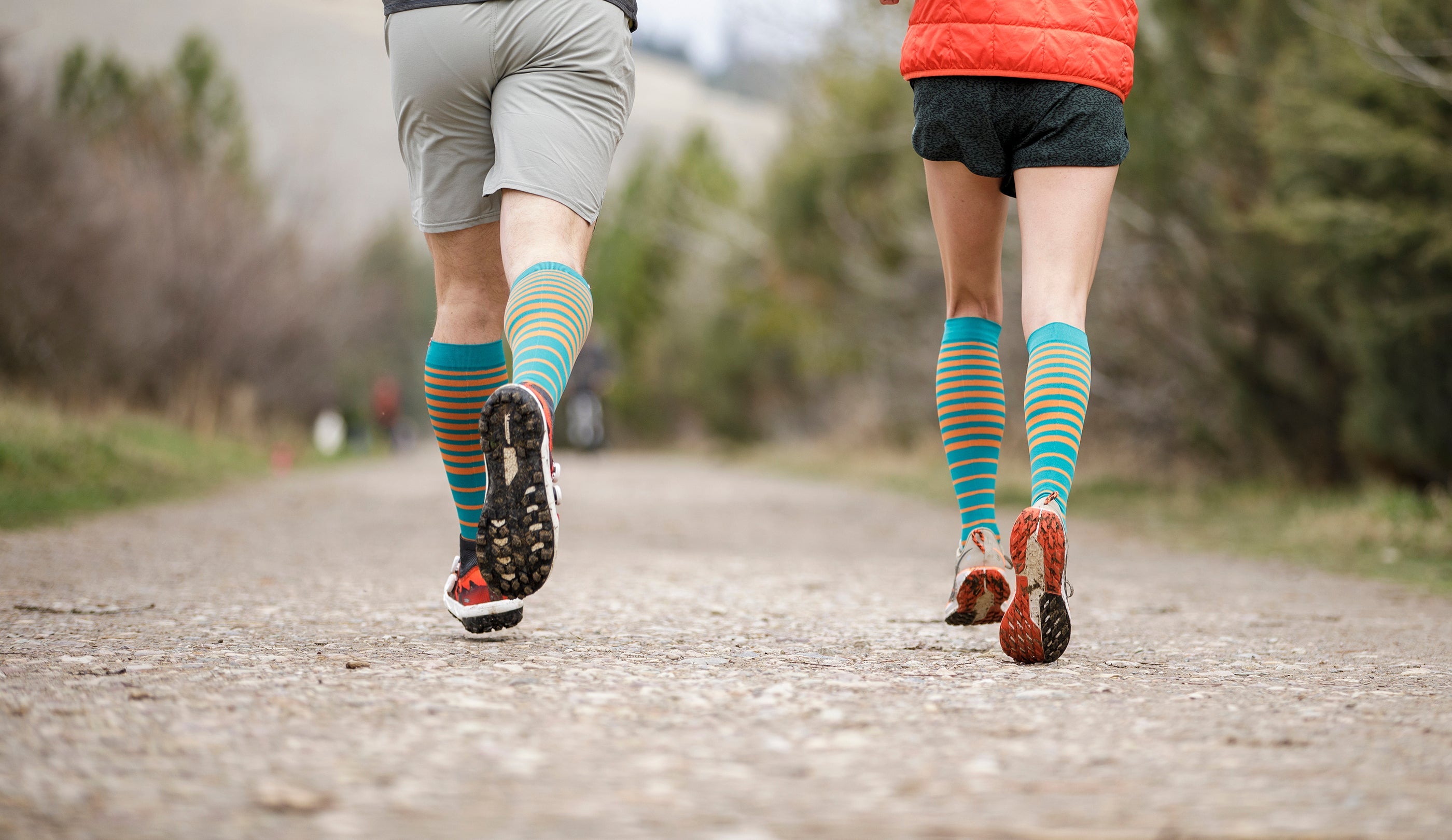








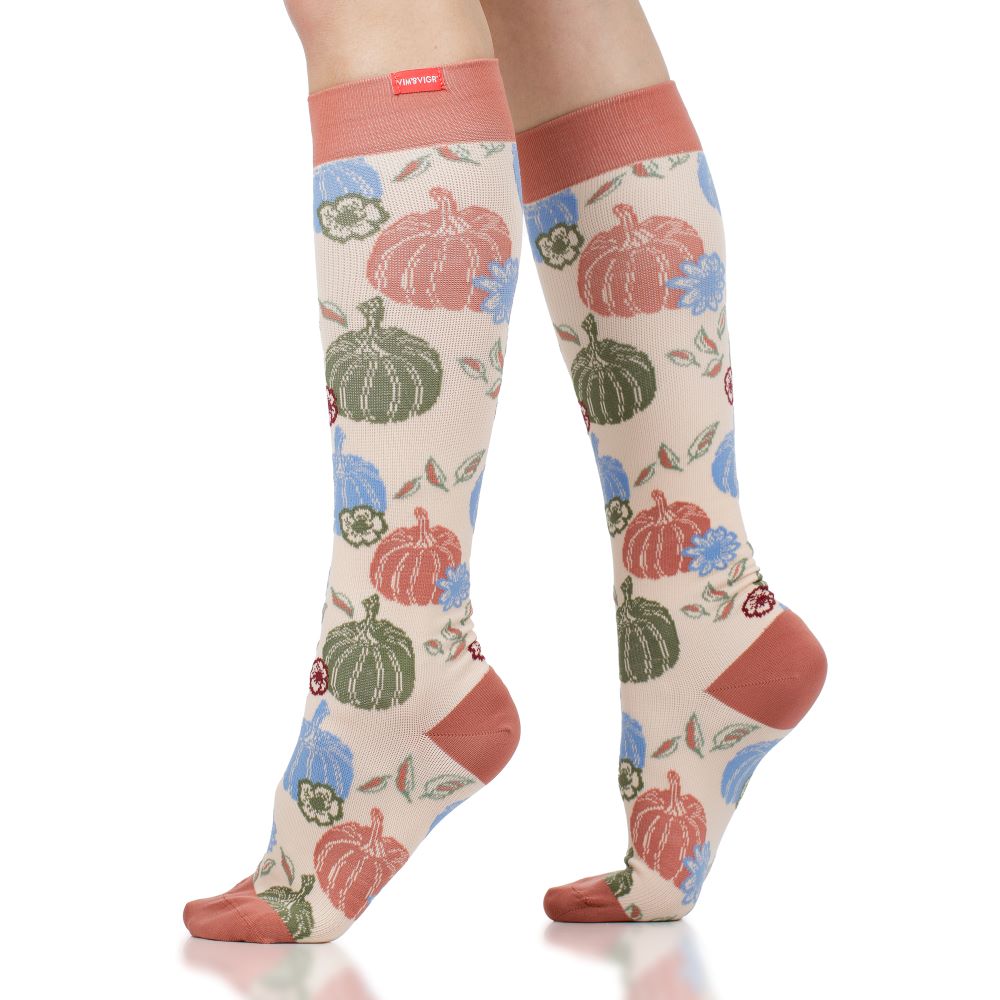
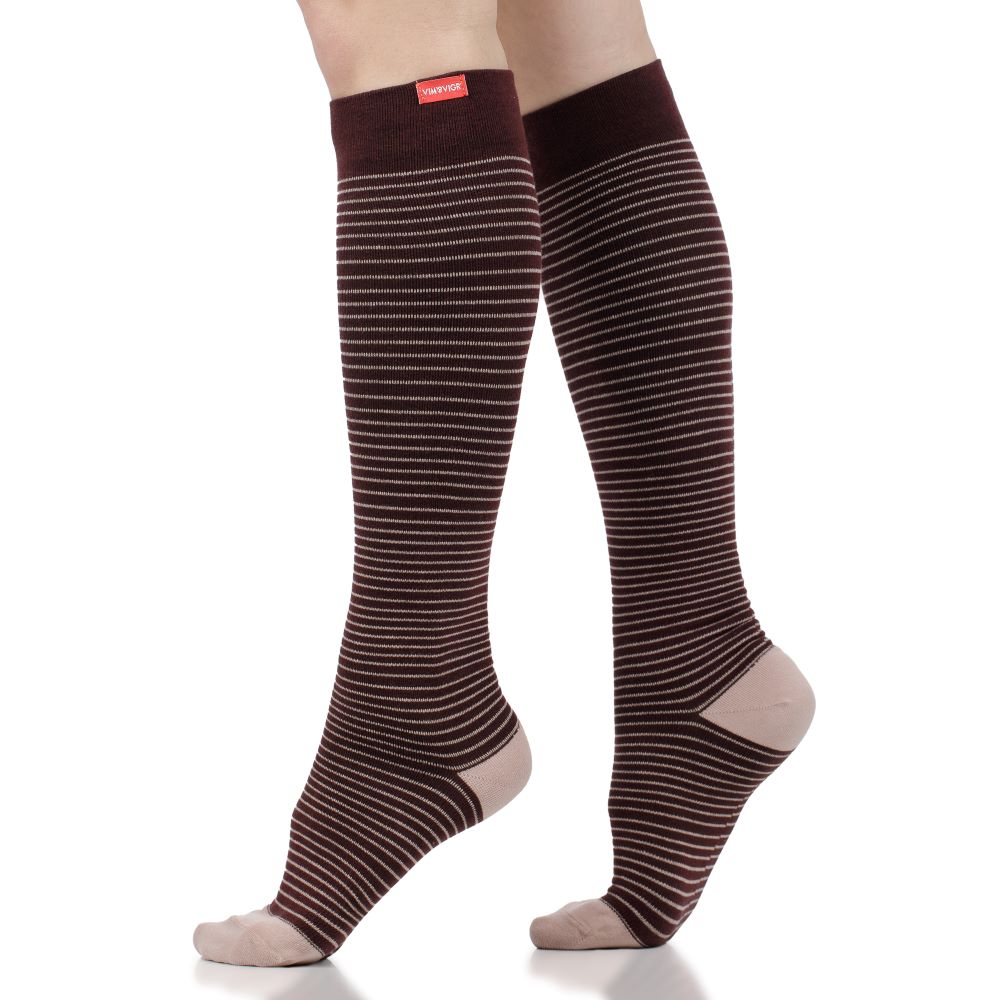
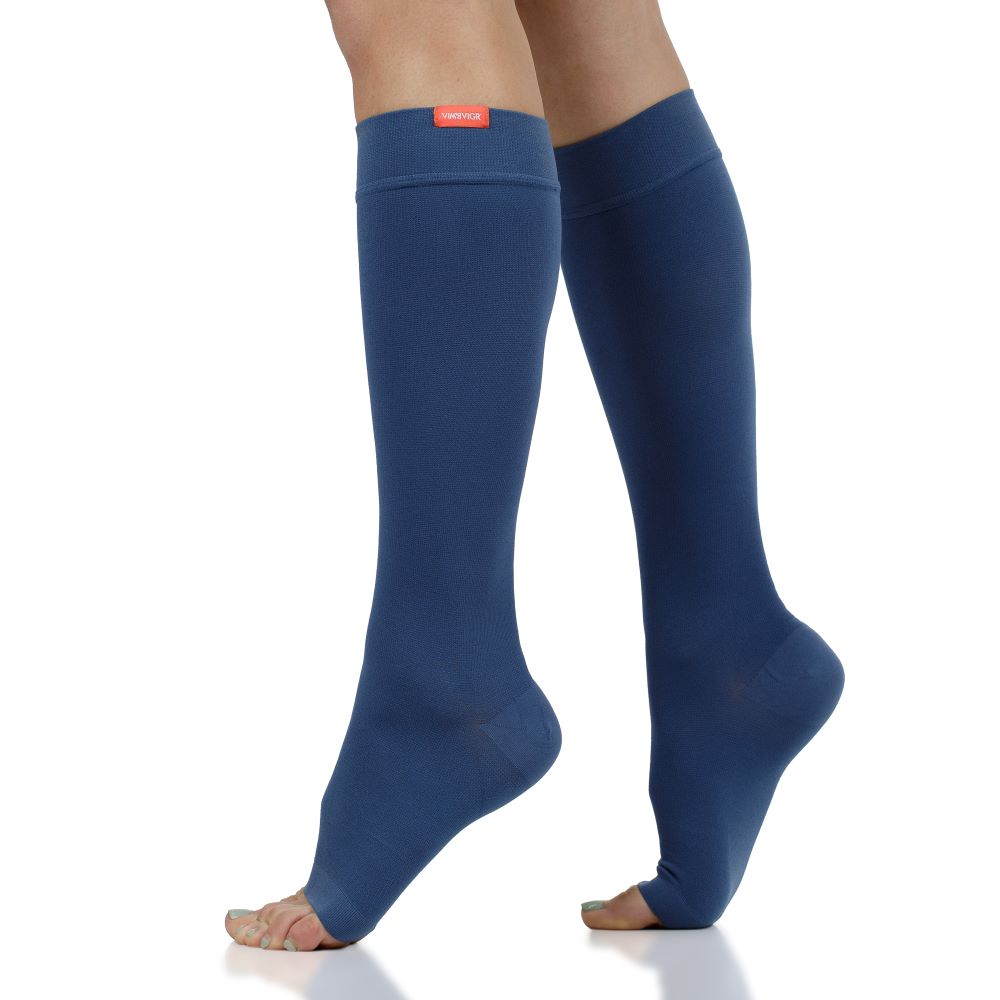






Leave a comment